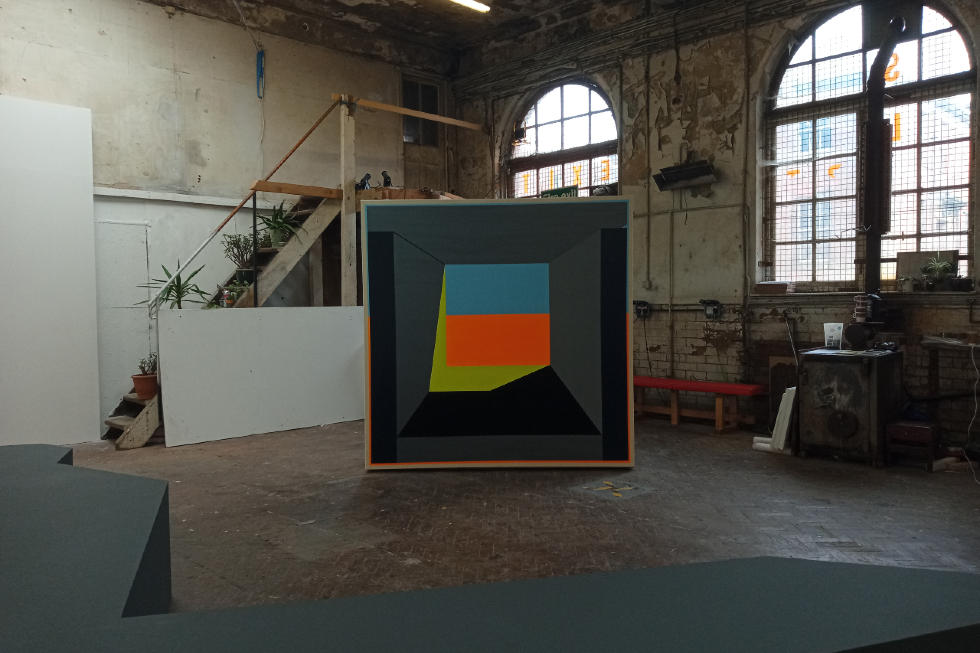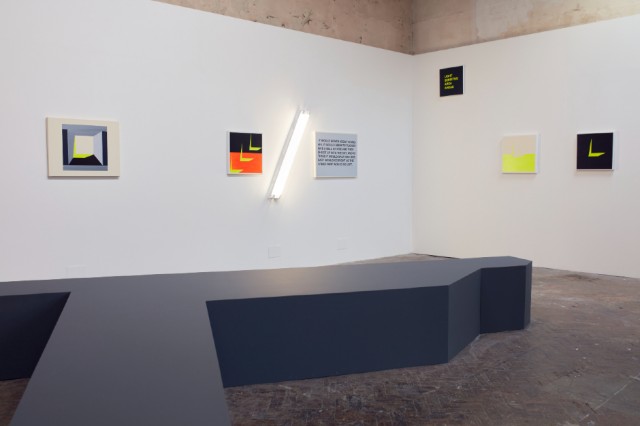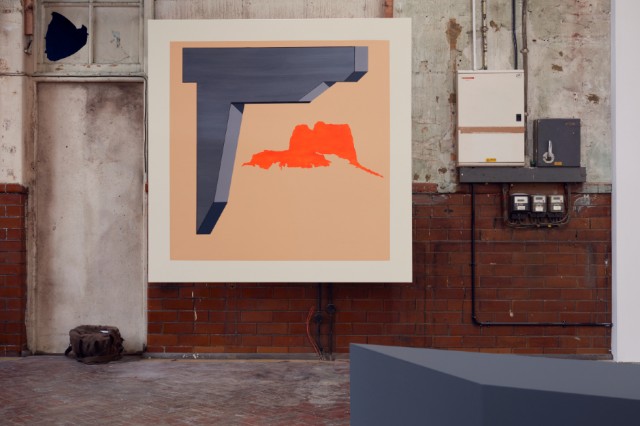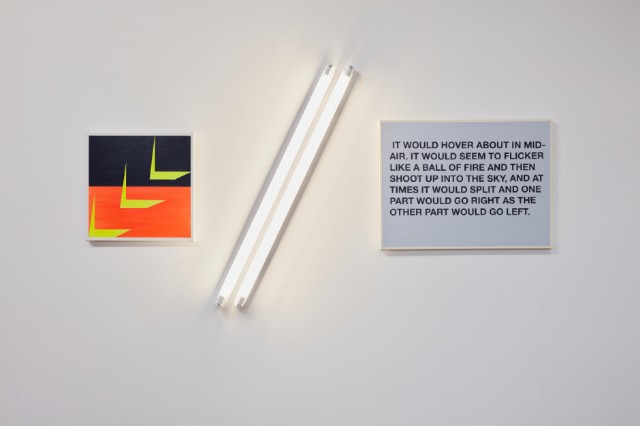“Fresh and energising.” Light Sensitive Area Ahead – Reviewed

“It remains a powerful and nuanced visual language.” Mike Pinnington explores Gareth Kemp’s Light Sensitive Area Ahead, a new body of work in conversation with the past, present and future of abstract art…
Scan some of the many lists of exhibitions to see in 2022 and amid the surrealism, contemporary art, old masters, performance, and impressionism on offer, one grand art historical movement – abstraction – is largely conspicuous by its absence. Emerging as a distinct field more than a century ago, and often strongly associated with progressive political beliefs and social change, it seems to have quietly fallen out of vogue. Perhaps in these most troubled and troubling of times, artists and audiences are turning to other, more tangible methods (see last year’s Turner Prize short-list as evidence – made up of collectives working to affect change in their communities).
That isn’t to say abstraction has been jettisoned entirely; nor should it be. It remains (in the right hands) a powerful and nuanced visual language, one its proponents have wielded to express, among other things: freedom, systems, idealism, cities, and utopianism; and, yes, as a lens through which we can view the world. One such contemporary artist is Gareth Kemp (recently showing at Liverpool’s Bridewell Studios and Gallery). A new body of works developed over the last couple of years, those on display in Light Sensitive Area Ahead responded in large part to Donald Judd’s 15 Untitled works in Concrete (1980–84), situated in the desert at Marfa, a small town 50 miles from the Mexican border in Texas.
It’s worth noting here that Judd, most commonly referred to as a minimalist (though not by himself), said of abstraction: “The first thing to do is to dispel the reasonable expectation that the term ‘abstract art’ has a definite meaning… A primary thing about abstraction,” he continued, is that “it is open and it is changeable.” This openness makes it an attractive proposition for many an artist looking to give form to their vision, and it is a sentiment worth bearing in mind when thinking about labels in general. And, indeed, in relation to the works in Light Sensitive Area Ahead.

It’s a commonly held view that, although abstract art is a difficult, slippery thing to define, one thing it tends not to do is convey representation. Yet in (almost) all of these works, inspired by research carried out during and since his 2018 visit to Texas, Kemp is representing, in some way, shape, or form, things existing in the world. He has used this apparent – contradiction is far too strong a word – tension prudently, addressing, paring back and isolating aspects of his source material across paintings, sculpture, and neon works. Of the former, the artist has said: ‘they’re an attempt to capture aspects of the Texan landscape: scale, flatness, space and light, colour and vastness’.
In Texas Painting I (2021), he juxtaposes an outline of the land with an industrial-looking wedge, putting the two in conversation (as Judd did). The same shape – this time in the guise of a large sculptural form installed length-wise – divides the space. It is like a three-dimensional cut-out, grafted, or rather extrapolated from an aspect of a nearby free-standing painting. It appears once again, in Sculptural Forms in a Liminal Space – one of a number of repetitions emerging as motifs, which recur throughout. Once you spot them, they’re everywhere.

These motifs might have originated as a column, shadow, horizon line, or ray of light falling on Judd’s minimalist concrete structures in the parched desert; but Kemp has taken these things and made them his own. One of the exhibition’s standouts is that aforementioned freestanding painting. Like Janus, the Roman god of beginnings, time, duality, doorways, and endings, on one side we have the foreboding hum of the desert in daytime (you can practically see the tumbleweed and cacti). On the reverse, in grey and black, with a sliver of white, its shadowy and cold moonlit twin. It’s a simple but compelling contrast, one suggesting life on the edge and right up against it, contending with the elements.
Light, and our relationship to its sometimes-mystical qualities, is key in this show. Suggestions of it appear again and again in paint, neon, and text; not least in those works that respond to the phenomenon known as the Marfa Lights (also referred to as Marfa Mystery Lights, or Marfa Ghost Lights). While no-one knows exactly what the strange occurrences are, recorded sightings stretch back to 1883, and there’s an abundance of anecdotal evidence lending credence to their existence.

Kemp has tapped into this rich vein, in text paintings recounting stories from those who claim to have seen them. The texts are somewhat poetic, enigmatic, and full of awe – not unlike abstraction itself. A pair of neon works (one of which recalls Dan Flavin) draws directly from the sightings and resultant mythologies, adding a human layer of wonder at nature’s mysteries to Kemp’s proposition.
It all makes for a considered, coherent exhibition; it picks up and adds to a conversation about abstraction and the interplay with land begun by Donald Judd decades ago. Kemp is unapologetic in referencing abstraction’s past, yet the outcomes feel fresh and energising, and the work gathered together for Light Sensitive Area Ahead suggests that this broad movement’s days are not numbered just yet.
Mike Pinnington
All images (other than top, by Mike Pinnington) courtesy Daniel Walmsley





